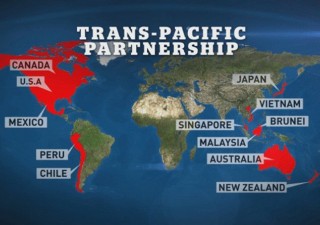The Impact of Economic Policies on IP Infrastructure
19 August 2016

On June 23, 2016, the British government voted to leave the European Union (EU). Separately, on February 4, 2016, Malaysia signed the Trans-Pacific Partnership Agreement (TPPA) together with 11 other countries in Auckland. On a regional level, ASEAN established the ASEAN Economic Community, which aims to create a single market for goods, services, capital and labour in the region. One of the main issues underlying these economic and political developments is the impact that they have on the management and enforcement of intellectual property on a local and global level. It is undeniable that IP has grown in significance and that it can no longer be ignored in policy making, whether at a regional or an international level.
Global demand and distribution of IPRs in Malaysia
It is obvious that the importance of IPRs in international transactions has led to patent and trademark owners seeking broader geographical coverage for their intellectual property, including in Malaysia. Statistics compiled by the Malaysian Intellectual Property Office (MyIPO) show that the number of trademark registrations in Malaysia has increased significantly, from 1,820 registrations in 1991 to 28,800 registrations in 2015. Similarly, the number of patents and utility innovations granted has increased from six in 1988 to 2,908 in 2015. For industrial designs, one can also document a growing demand for protection, from 281 registrations granted in 2000 to 1,301 registrations in 2015.
Indeed, part of the growth in the number of Malaysian grants for industrial property rights can be explained by the increase in the number of foreign and Malaysian applicants for both trademarks and patents. This increase in the number of registrations by Malaysians may also reflect changes in the level of awareness of Malaysian companies with regard to the potential value residing in patents and trade marks.
Copyright protection in Malaysia has also gained importance with the coming into force of the Copyright (Voluntary Notification) Regulations 2012 on June 1, 2012. Whilst registration of copyright is not necessary in Malaysia, a right holder can now voluntarily give notification to the Registrar of Copyright of its interest in the copyrighted works, with the payment of the prescribed fees. Pursuant to these regulations, there is now a Copyright Office in Malaysia, which is essentially the office of the Intellectual Property Corporation of Malaysia.
The growing global demand for intellectual property protection in Malaysia can also be documented in the area of plant breeders’ rights, wherein Malaysia is one of the few countries offering protection of the rights of breeders of new plant varieties, and recognition as well as protection of the contribution made by farmers, local communities and indigenous people towards the creation of new plant varieties in Malaysia.
Policies to define the scope of IP
Governments can also use policies related to market structure to limit or further define the scope of exclusive rights conferred by an intellectual property title. One possibility is through compulsory licenses, which are authorizations to use a patented invention without the agreement of the patent owner. Compulsory licenses are provided in the Malaysian Patents Act 1983. Section 49(1) of the Patents Act provides that at any time after the expiration of three years from the grant of a patent or four years from the filing date of the patent application, whichever is the later, any person may apply to the Registrar for a compulsory licence under any of the following circumstances:
i. Non-production of the patented product or non-application of the patented process in Malaysia without any legitimate reason;
ii. Non-availability for sale of the patented product in Malaysia without legitimate reason despite local production;
iii. Unreasonably high prices of the patented product being sold in Malaysia without legitimate reason despite local production; or
iv. Insufficiency of the production of the patented product in Malaysia such as to lead to failure to meet the public demand without legitimate reason.







